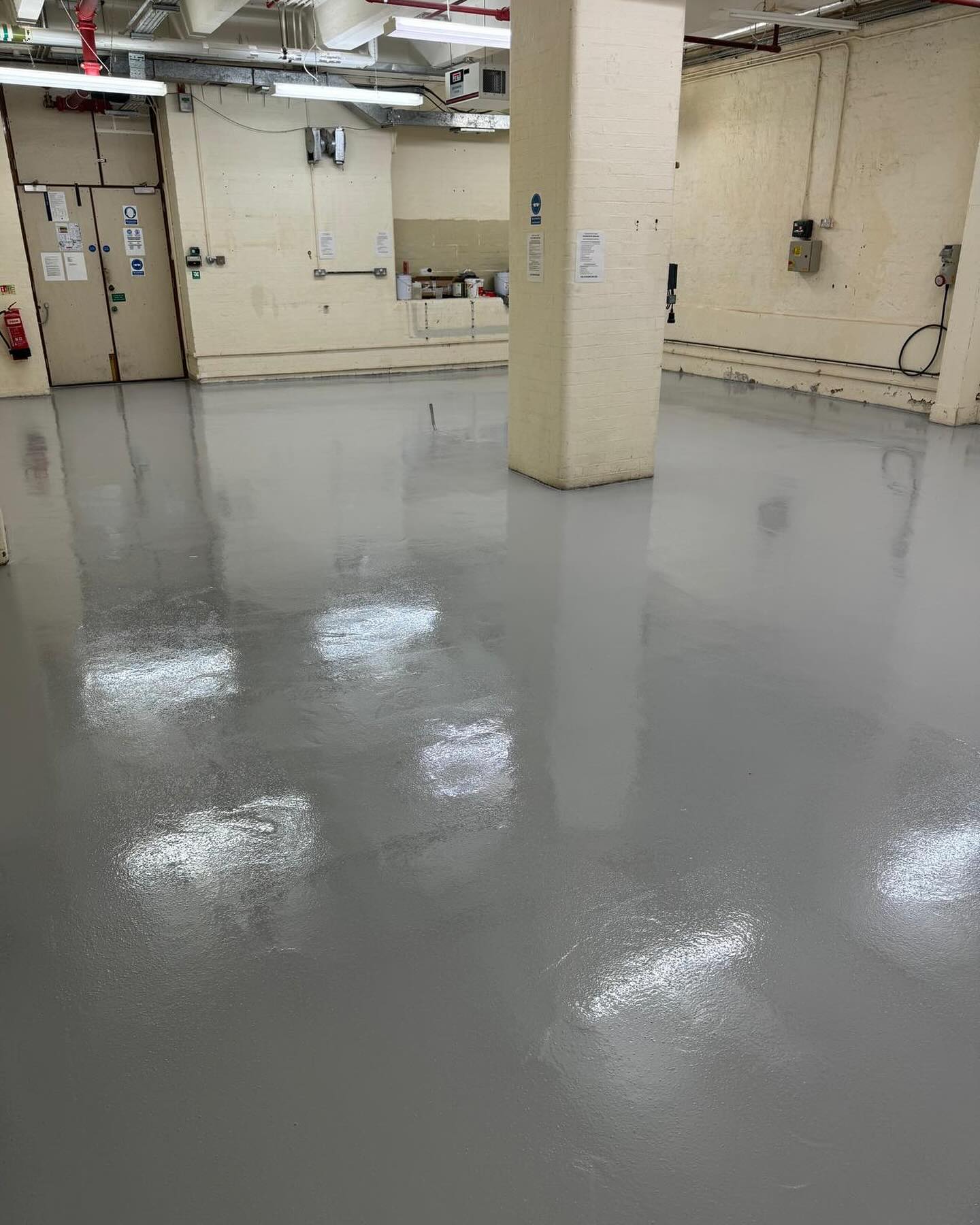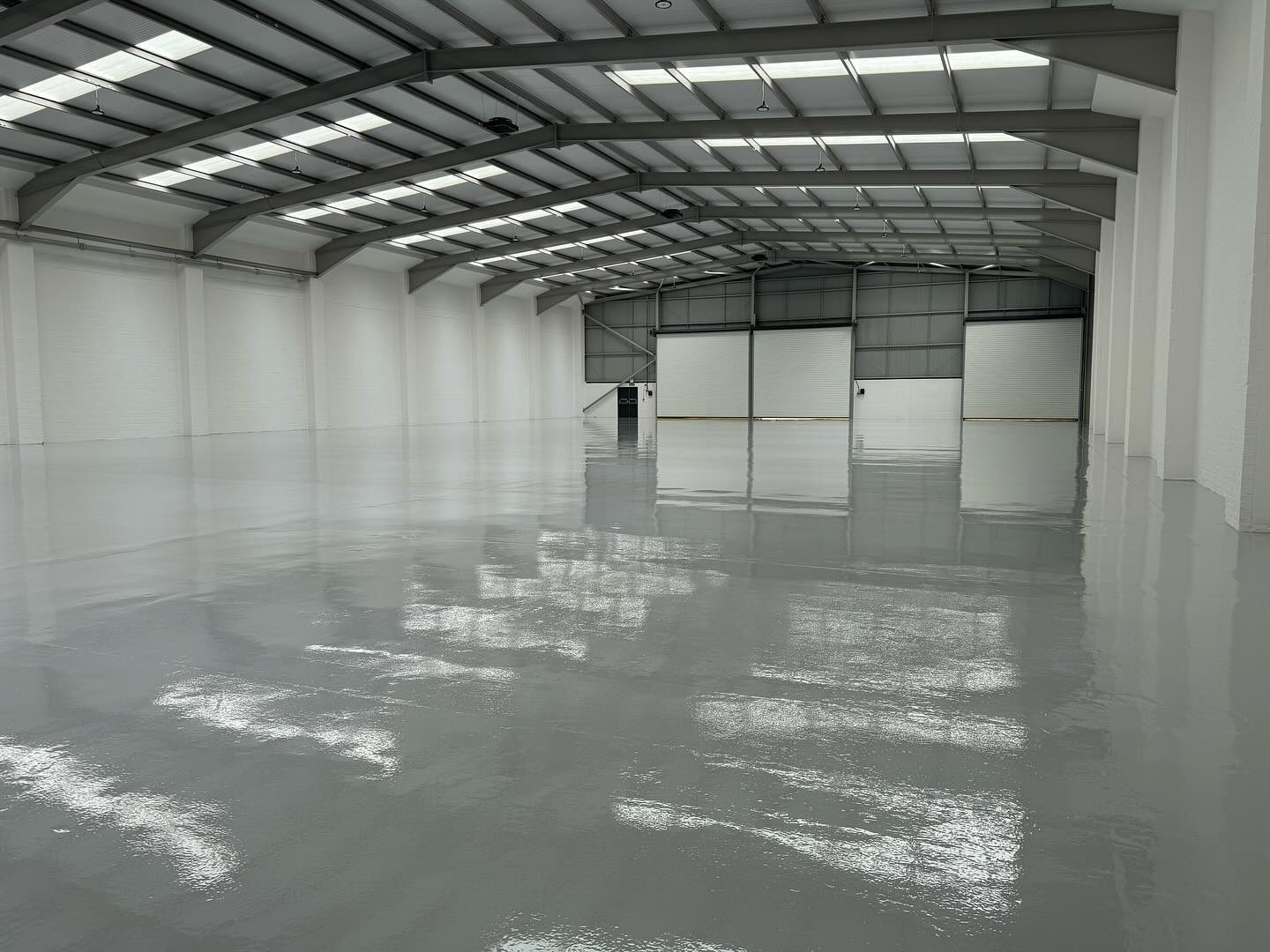For most warehouse and industrial applications, epoxy flooring offers the best balance of durability, cost-effectiveness, and performance, typically lasting 10-20 years at £11-15 per m². However, polyurethane excels in environments with extreme temperature fluctuations, heavy impact, or where flexibility is crucial, costing £11-15 per m² but offering superior thermal shock resistance.
Choosing between epoxy and polyurethane flooring systems is one of the most critical decisions facility managers face when upgrading industrial floors. Both are premium resin flooring systems, but their different chemical properties make each better suited to specific environments. After installing over 500,000 square metres of both systems across London warehouses, we've compiled this comprehensive comparison to help you make the right choice.
Which Flooring System Lasts Longer?
Epoxy flooring typically provides 10-20 years of service life in standard warehouse conditions, with its rigid structure offering excellent resistance to compression and surface wear. The cross-linked polymer structure creates a hard, glass-like finish that withstands forklift traffic and pallet movement exceptionally well.
Polyurethane flooring, while slightly less hard than epoxy, offers 12-25 years of service life due to its flexibility and impact absorption. The elastic nature of polyurethane systems allows them to flex with substrate movement, reducing the risk of cracking in buildings with structural movement or vibration.

What's the Real Cost Difference?
Understanding the true cost requires looking beyond initial installation prices:
| Cost Factor | Epoxy Flooring | Polyurethane Flooring |
|---|---|---|
| Material Cost per m² | £15-£11-15 per m² | £11-15 per m²-£11-15 per m² |
| Installation Cost per m² | £5-£10 | £10-£15 |
| Total Installed Cost | £11-15 per m² | £11-15 per m² |
| Annual Maintenance | £0.50-£11-15 per m² | £0.30-£11-15 per m² |
| 20-Year Lifecycle Cost | £11-15 per m² | £11-15 per m² |
For detailed pricing on warehouse projects, see our complete epoxy flooring cost guide or explore polyurethane flooring costs for specific applications.
How Do They Handle Chemical Exposure?
Epoxy resins offer excellent resistance to most acids, alkalis, and solvents, making them ideal for pharmaceutical flooring and laboratory environments. The dense molecular structure prevents chemical penetration, though concentrated acids above 30% concentration can cause degradation over time.
Polyurethane systems provide superior resistance to organic solvents and oils, particularly important in facilities with manufacturing flooring and hydraulic equipment. They also resist lactic acid better than epoxy, making them the preferred choice for food processing flooring.
Need Expert Advice on Your Flooring Choice?
Our technical team provides free site assessments to determine whether epoxy or polyurethane best suits your specific requirements.
Get Your Free AssessmentTemperature Performance Differences
Temperature resistance often determines the choice between these systems. Standard epoxy performs well between -20°C and +60°C, suitable for most warehouse flooring installations. However, rapid temperature changes can cause thermal shock cracking in rigid epoxy systems.
Polyurethane flooring handles extreme temperatures from -40°C to +120°C, with excellent thermal shock resistance. This makes it essential for cold storage facilities and areas with steam cleaning or hot water washdown requirements.
Installation Time and Process Comparison
Epoxy installation typically requires:
- Surface preparation via concrete grinding services (1 day)
- Primer application and curing (1 day)
- Base coat application (1 day)
- Top coat and cure time (1-2 days)
- Total downtime: 4-5 days for 1000m²
Polyurethane installation process:
- Surface preparation often requires shot blasting (1-2 days)
- Moisture-tolerant primer application (1 day)
- PU screed or coating application (1-2 days)
- Seal coat if required (1 day)
- Total downtime: 5-7 days for 1000m²

Which System for Which Application?
Choose Epoxy For:
- Standard warehouse flooring with forklift traffic
- Clean room and pharmaceutical flooring
- Electronics manufacturing requiring ESD protection
- Showrooms and retail flooring needing decorative finishes
- Areas requiring anti-slip flooring systems
Choose Polyurethane For:
- Food production with thermal shock exposure
- External loading bays with weather exposure
- Multi-storey car parks requiring flexibility
- Areas with heavy impact from dropped tools or equipment
- Facilities with aggressive cleaning regimes
Maintenance Requirements Compared
Epoxy floors require regular cleaning with neutral pH detergents and periodic recoating every 5-7 years in high-traffic areas. The hard surface shows scratches more readily but can be easily refreshed with a new top coat.
Polyurethane systems hide wear better due to their matte finish options and self-healing properties. They require less frequent recoating (every 7-10 years) but repairs to damaged areas can be more complex due to adhesion challenges between old and new material.
For specific maintenance requirements, see our guide on chemical resistance and cleaning protocols.
The Final Verdict: Making Your Choice
For 80% of industrial applications, epoxy provides the optimal solution, offering excellent durability at a lower cost point. Its proven track record in industrial flooring applications makes it the safe choice for standard warehouse and manufacturing environments.
Choose polyurethane when your facility faces extreme conditions: temperature swings exceeding 40°C, heavy point impact loads, or exposure to specific chemicals that degrade epoxy. The additional cost is justified in food processing flooring, brewery floors, and external applications.
Consider hybrid solutions like epoxy base coats with polyurethane top coats, combining epoxy's cost-effectiveness with polyurethane's flexibility and chemical resistance. This approach, detailed in our PU screed vs epoxy coating comparison, offers the best of both systems.
Ready to Choose Your Industrial Flooring System?
Get a detailed quote for both epoxy and polyurethane options for your facility. We'll help you make the right choice based on your specific requirements and budget.
Get Your Free Quote